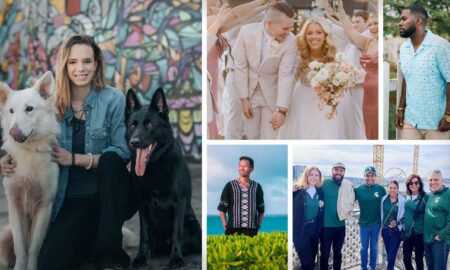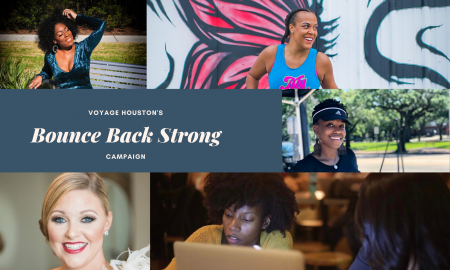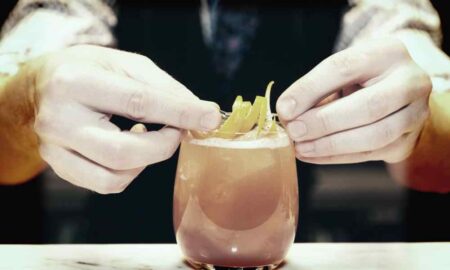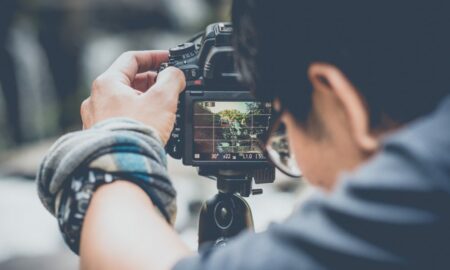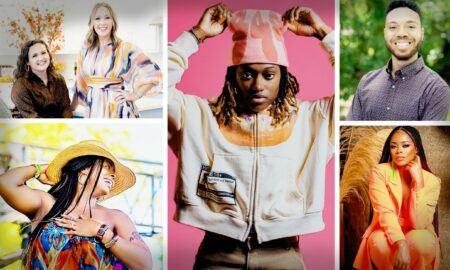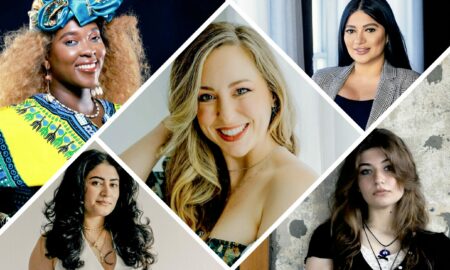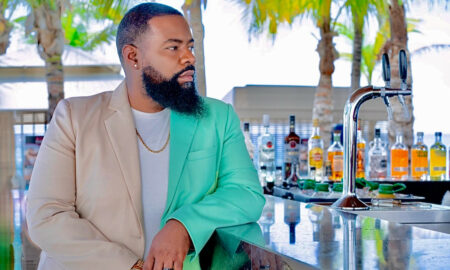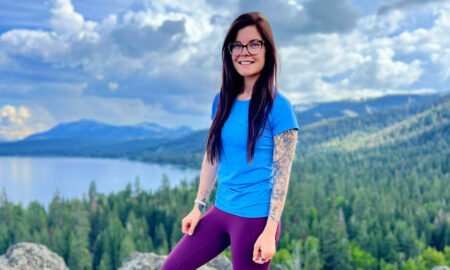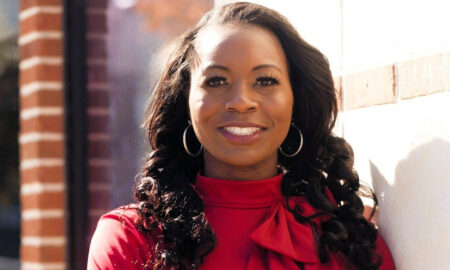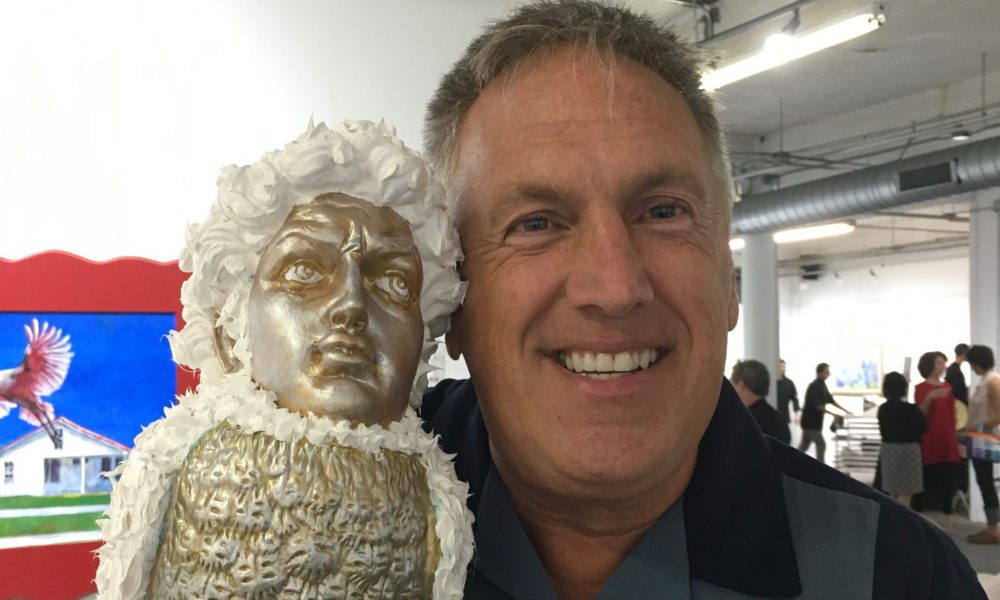
Today we’d like to introduce you to Michael Golden.
Michael, please kick things off for us by telling us about yourself and your journey so far.
There are so many different ways an artist can tell their story. Two years ago, 30 years of my artwork was presented in a retrospective both in Houston and on the South Side of Chicago, where I grew up. That was a great opportunity to see a cliff notes version not just of my work, but also my story.
My sister Cathy was born severely mentally handicapped and had several physical problems too. She and I would sit at the kitchen table with her crayons and a notebook of lined paper. Cathy would scream out “cow” or “turtle”, and I would draw one and hold it up for her and she would scream in appreciation.
As a kid, I also hid a lot, for several reasons. I nailed boards like an easel up in a crab apple tree and I would sit there for hours drawing birds, bees, squirrels, blossoms, and nests.
Now in my 50’s, I am still drawing and painting birds and bees and turtles. I still climb trees. I still have the small white bucket where Cathy kept her crayons. I buy sketchbooks with half the page lined.
Another part of my story that affects my image making is my path to being an artist. Since childhood I always wanted to be a farmer or an artist. I had my heart set on a high school and a college that had great art programs, but instead I was encouraged to go to a high school with no art classes at all, and later to get a business degree. I ended up attending medical school with the intention of running a facility for the mentally handicapped. Part of my program included a residency following doctors around a hospital to see patients.
On my clipboard, like in my childhood tree, I would sketch the patients lying in their beds…perfectly still models. One day, a doctor I admired confronted me and asked what I was doing in the program. At the end of our discussion, he told me my drawings were beautiful and that it was more important to be happy. The next day I dropped out of the program and signed up for some college art courses, eventually earning an MFA in Printmaking.
During my early years making serious art, I concentrated mostly on the human figure. The backgrounds tended to be very realistic. Most of my work was in lithography and intaglio, so it was black and white.
During my 30’s and 40’s I had some serious life and death health issues. I still worked in my studio as much as possible, but my images changed to objects: keys, funnels, hoses, amaryllis, the moon. The colors in my work were the colors of medical waste and bodily fluids. The chemicals needed for print processes were too toxic for my lungs and I moved to painting and drawing. The backgrounds tended to be dark or I drew on old, yellowed papers.
The images were powerful but depressing. At some point I realized there was a benefit to staying sick because that gave me ideas for a body of work that got shown in Houston galleries and even New York and was collected and bought. I remember making a very conscious decision to instead make colorful, vibrant, life-affirming images with the hope that, along with other changes in my life and thinking, my body would follow that lead. It worked.
One of the bonuses of that shift in honoring my mind-body connection was making other energetic connections. During one surgery, I died twice. Besides the usual seeing “the light” and speaking with my late dad and sister, it was as if I was downloaded with abilities and insights that have started to influence my art. I’d already been using sacred geometry as backgrounds for many paintings, especially with birds, but now I was designing my own.
I was born blind in my right eye, and more and more it’s as if I can see energy with that eye, while I see the physical world with my left eye. I’ve quit calling them my good eye and my bad eye. My paintings try to blend these two realities: carbon-based and etheric.
I also paint geometric patterns over antique prints from well-known naturalists. These reference my love of printmaking, but imagine a new, energetic understanding of the world over a documentation someone else made of their discovery in the natural world.
Can you give our readers some background on your art?
I take many photographs out in nature to use as reference material for paintings. Early on I got in the habit of keeping files with all the images I collected: a file for bird eggs, a file for bees, separate files for standing herons and flying herons, and such. So, when I’m in the studio and I want a certain critter or bird in a painting, I go through those files.
I also volunteer at the Wildlife Center of Texas, caring for young and injured birds and animals. Since there are also endangered animals and seizures from criminal cases, volunteers aren’t allowed to take photos, but after seeing a few of my paintings, I was allowed to take detail photos for reference material. I recently painted a life size roseate spoonbill and was able to take close up photos of a live one’s bill and feet to use while painting. Sometimes while I’m feeding the birds, I just stare into their eyes and memorize the shapes and colors. Lately I’m in love with a baby pelican and obsessed with a giant snapping turtle on a major diet. They will probably end up in artworks.
I recently quit teaching after being an art professor for over 25 years. I believe anyone can be taught to see as an artist sees, but during that time I had the honor to teach some students with amazing God-given talent. I loved pushing those students to do more. One reason I have stayed diligent in working at my craft is awareness of my own talent, and to keep pushing it and practicing. Students inspire teachers, too.
With everything I’ve been through health-wise, I also consider myself a survivor. With that comes a desire to share that message. Part of that, for me, is to add beauty to the world.
When my work is exhibited or my studio door is open, I notice that children are often the most drawn to my art. I love that. Most times I’m moved to paint an image as if I’ve channeled it, without knowing why at the start. More and more some child will stand in front of a painting and tell me what they see and I feel stupid that I hadn’t seen it there before. Kids are so tuned in and tapped in. Sometimes I ask them their favorite animal and make them a sketch to take, in appreciation for their critique and insight.
I’m also touched by men and women that are affected by my paintings because of the very personal connections they make between certain birds or butterflies and deceased relatives. “Whenever I see a cardinal I know my grandma is sending me a message”, they say. Or, “Whenever I think about my son who died I see a yellow swallowtail butterfly later that day”. I’ve had people stand in front of a painting and cry. I’ve heard stories that have inspired new images.
I’ve come to know that there’s so much “noise” in the world and our daily lives, that when the Creator or our helpers are trying to get our attention they just can’t get through. But nature is always tuned in, so sometimes that bluebird or dragonfly gets our attention instead. It’s not necessarily grandma or dad, but a reminder that our higher self is trying to get our attention.
There are healing qualities in sacred geometry. I want the creatures in my paintings to get the viewers’ attention and in almost a subversive way, allow my audience to soak up the surrounding plane and instill some grace and ease and other good qualities. I think that’s why hospitals and public spaces have collected my pieces. Recently I exhibited in a gallery where the owners lived in the same building. One day I visited and there were two chairs in front of a large painting with five white ravens. When I asked about the chairs, the wife told me that at night they turned all the lights off except for the spots on that painting and they would sit and talk with the ravens, like it was TV or Skype!
In your view, what is the biggest issue artists have to deal with?
Whether you’re an artist or in any other career, what matters more than the conditions is your decision to be happy. That was a big lesson for me. I was visiting friends in Houston in 1989 when a gallerist told me if I moved here he’d give me a job and I came. I fell in love with gallery work but got fired a year later. I also loved teaching in grad school and started teaching adjunct at a local college.
Within a few years, I was a full-time professor, department chair, and ran the gallery…all while working in my studio. Houston gave me a dream job where I got to do my 4 top jobs: studio, gallery, teaching, and administration. I don’t know if that could happen today, but it does seem like there are lots of job openings. I have written letters of reference for students over the past ten years for arts-related jobs that I didn’t know existed or that I secretly wanted to apply for.
Recently there have been some changes at HAA that are better for artists, there are more studios available (but most too expensive), and there are many interdisciplinary and public art projects. Most people, artist or not, dream about doing what they want to. More important than the challenges out there, it’s important to “expect” that your dreams will come true. To dream without expecting defeats the purpose.
What’s the best way for someone to check out your work and provide support?
I am currently in an exhibit with Beth Secor called “Taking the Auspices” at the Bosque Gallery at Lone Star College. The show runs June 19 through July 19. A few of my paintings have been reproduced as scarves by Rozendove, based in Houston (Rozendove.com). The scarves are printed in Italy.
You can see my work on my website www.michaegoldenstudio.com and on Instagram at Goldenslefteye. My studio is at Spring Street Studios (part of Sawyer Yards) and is open by appointment.
Contact Info:
- Address: Spring Street Studios, #120 1824 Spring Street
Houston, TX 77007 - Website: www.michaelgoldenstudio.com
- Phone: 713-854-6577
- Email: m-golden@sbcglobal.net
- Instagram: goldenslefteye
- Facebook: michael golden




 Image Credit:
Image Credit:
Artwork photography by Rick Wells.
Getting in touch: VoyageHouston is built on recommendations from the community; it’s how we uncover hidden gems, so if you know someone who deserves recognition please let us know here

